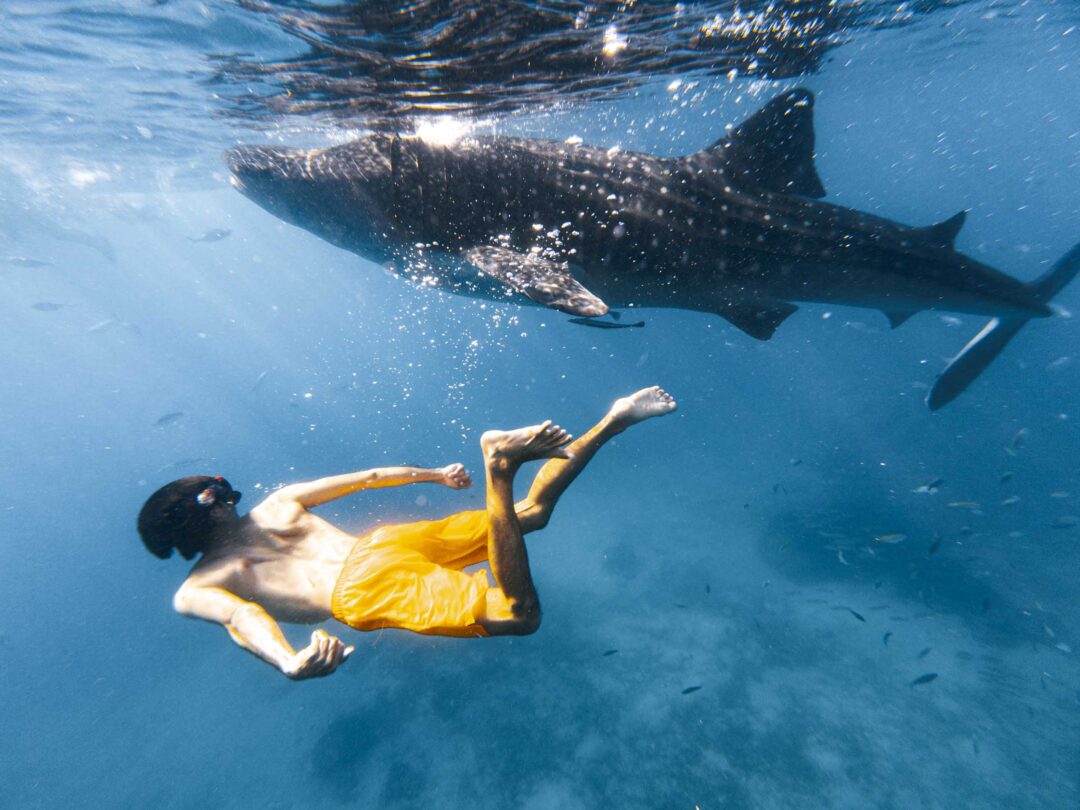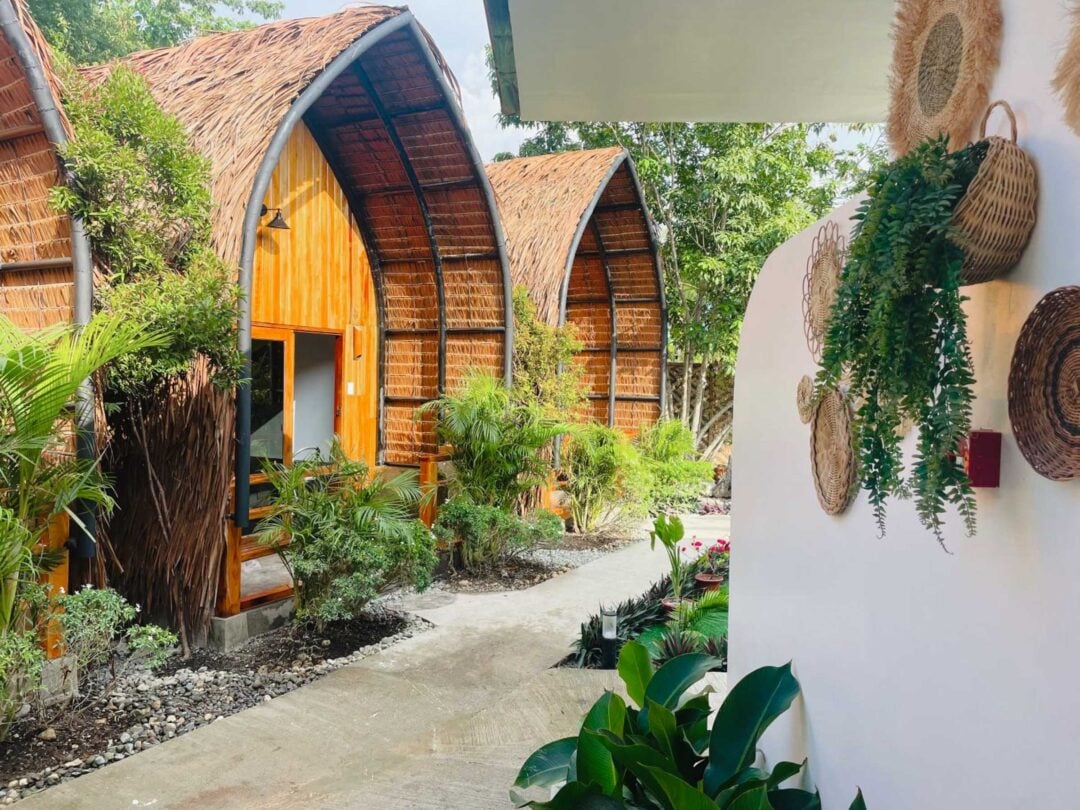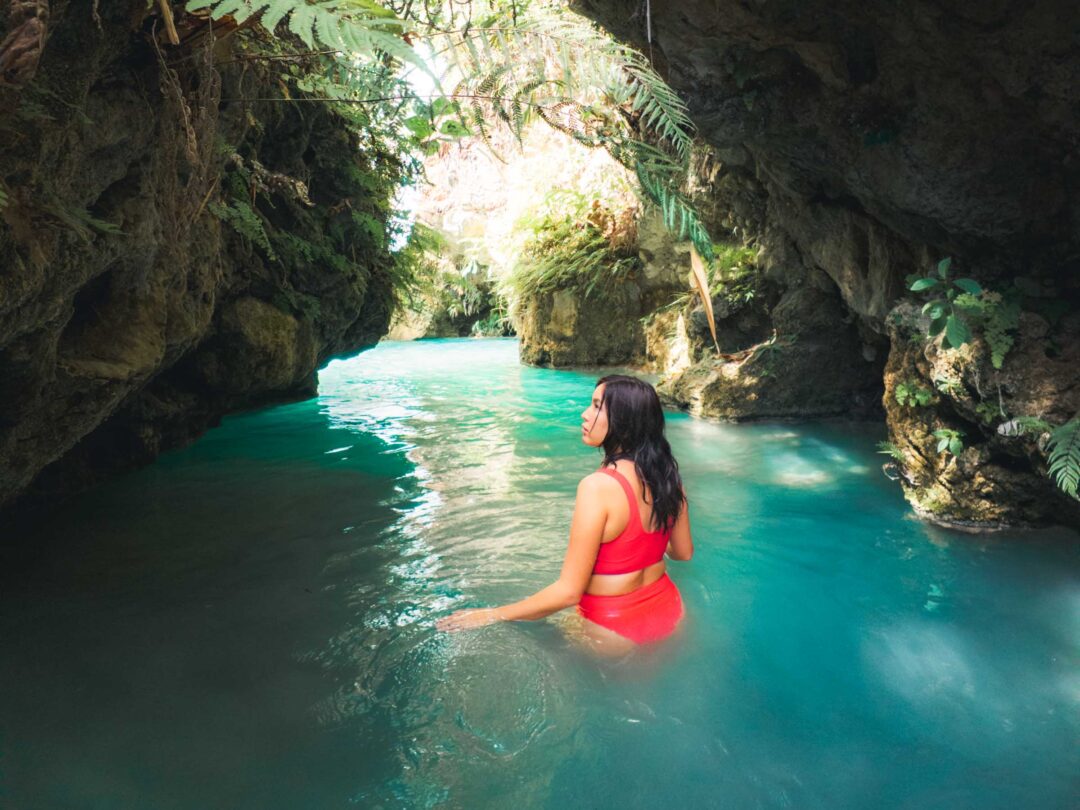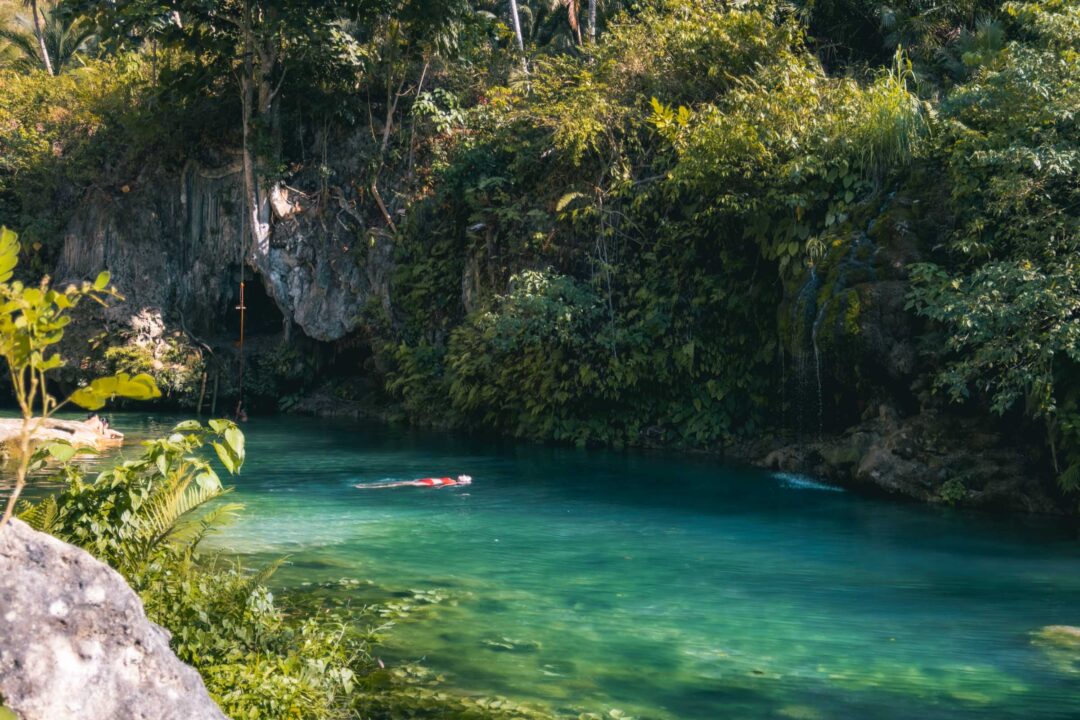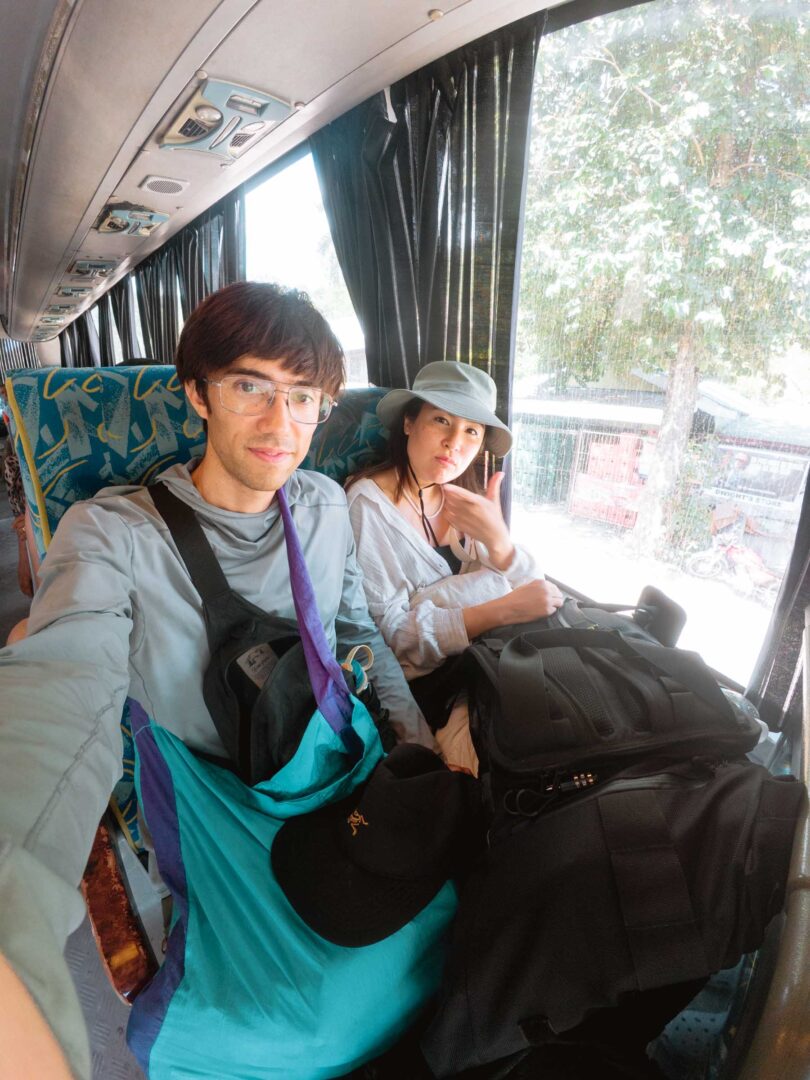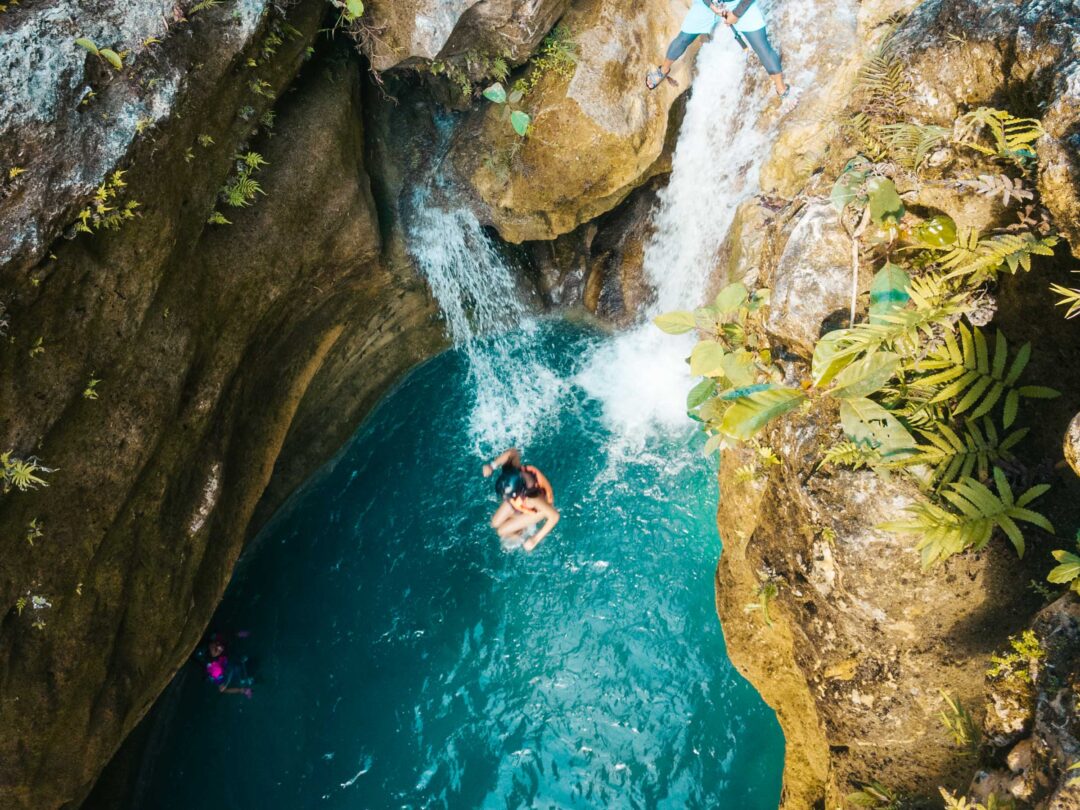Swimming with whale sharks in Oslob is a surreal, once-in-a-lifetime experience. These gentle giants glide effortlessly through the water, giving you an up-close encounter you won’t forget.
The Oslob whale shark watching tours start early in the morning. You’ll board a small paddle boat and head a couple hundred meters offshore to the designated dive site. Once there, you’ll put on a snorkel, jump into the ocean, and find yourself face-to-face with these incredible creatures.
We went whale shark watching in Oslob and put together this detailed guide to help you plan your trip there.
In this article, I’ll share everything you need to know, from how to get there and what to bring, to what to expect before and during your time in the water with the whale sharks for an unforgettable adventure.
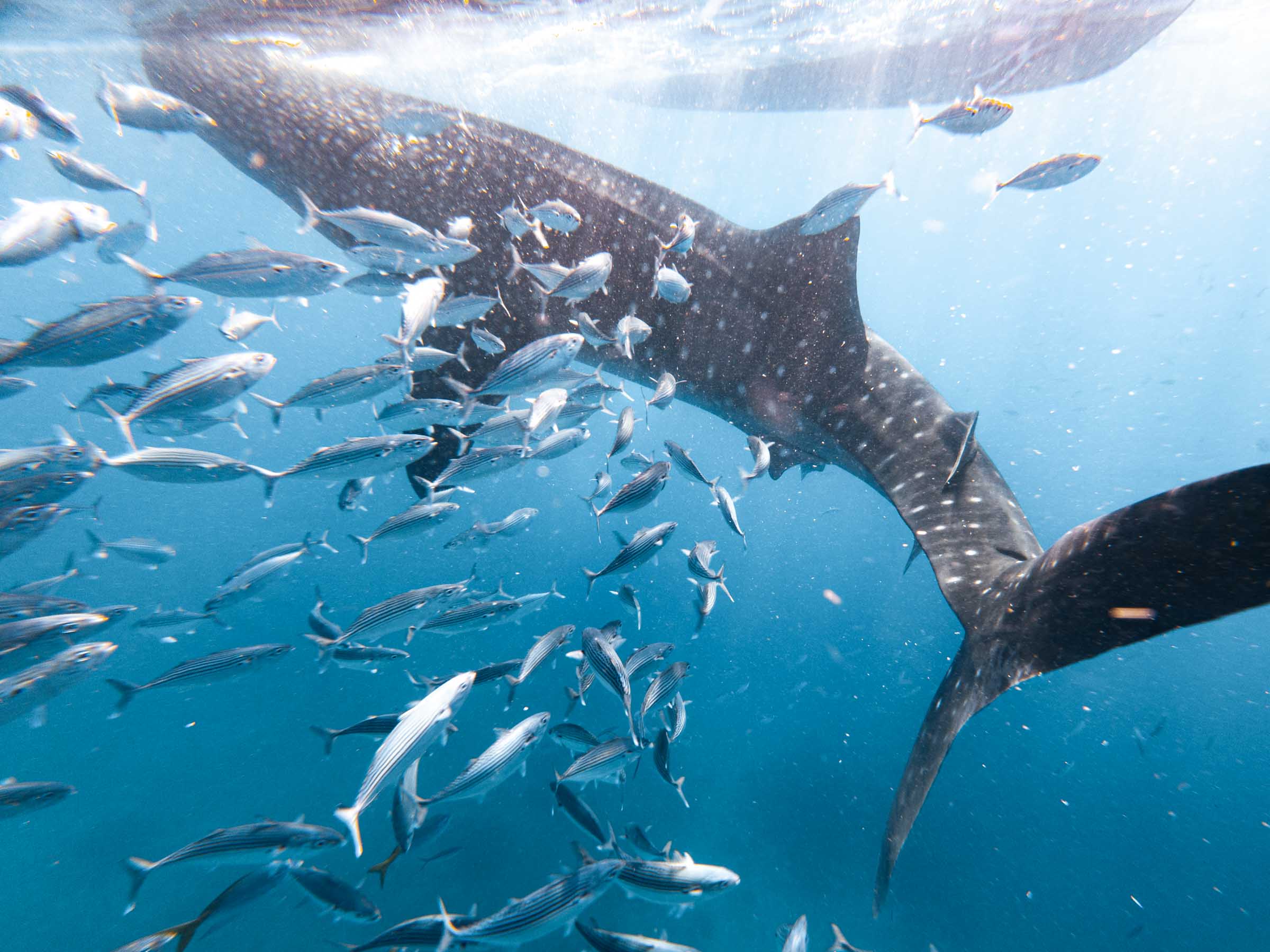
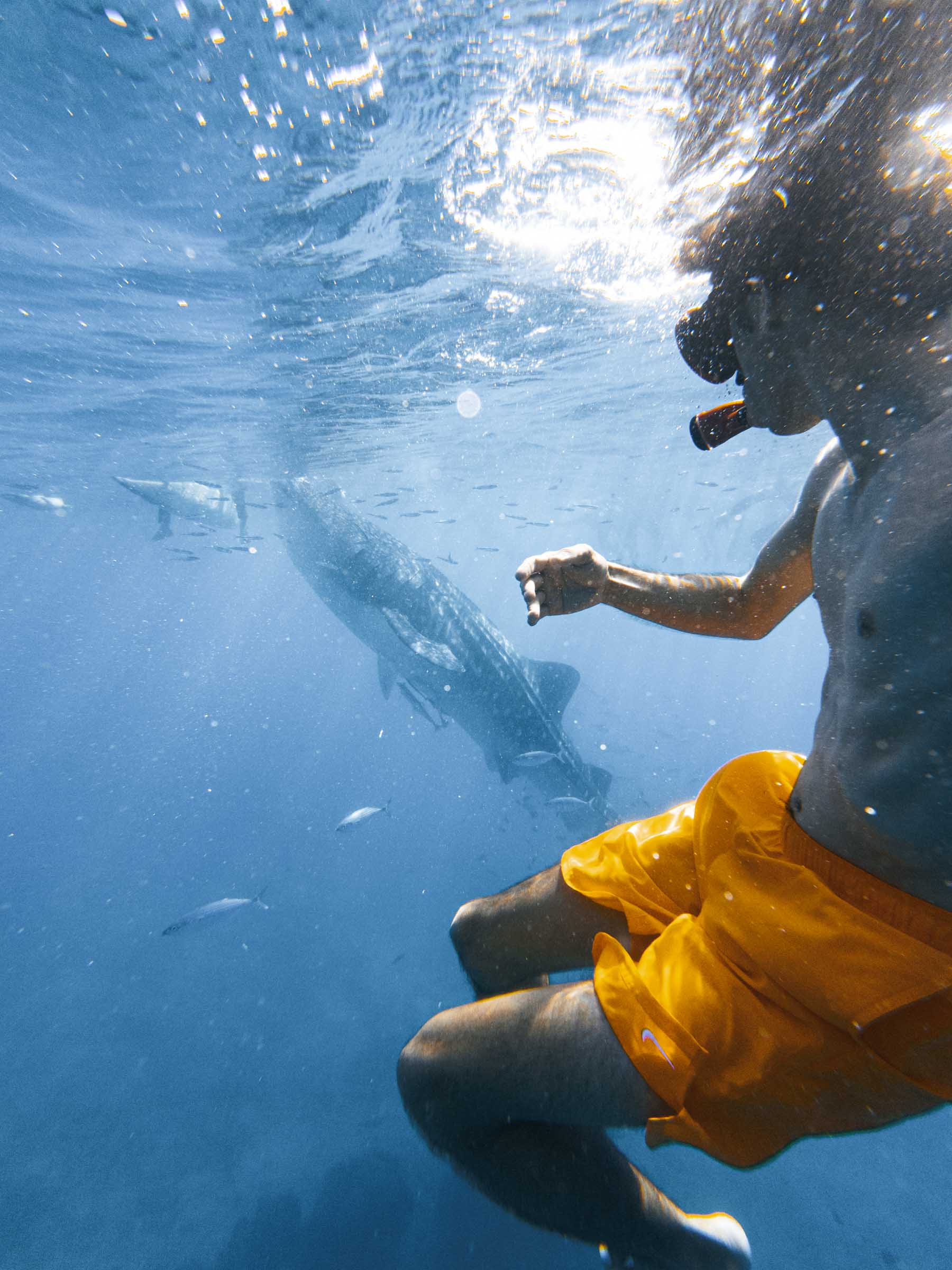
How to Get to the Oslob Whale Shark Watching Center
The Oslob Whale Shark Watching Center is located about 20 minutes south of the town of Oslob in Cebu.
If you are based in Oslob, you can easily get there yourself by hiring a tricycle in town. Be sure to arrange your tricycle the day before, so you don’t waste time early in the morning trying to flag one down, since there won’t be too many along the road.
Another option is to motorbike there from Oslob. That’s what we did.
If you’re based in Cebu City, I recommend booking this Whale Shark Watching Experience that includes round-trip transportation from your hotel. This saves you the hassle of navigating public transport or arranging a private ride.

What to Expect When Whale Shark Watching in Oslob
Whale shark watching is one of the most popular things to do in Cebu. Because of its popularity, the entire process is highly organized and regulated by the local government.
Getting Your Ticket & Safety Briefing
The experience begins at the Oslob Whale Shark Watching Briefing Center.
Despite the early start time, people line up well before sunrise. It’s not uncommon for some people to start showing up as early as 3 AM to be the first ones in line. However, the official ticketing doesn’t begin until 5 AM, when government workers start distributing ticket numbers.
Once you receive your ticket, you wait until your number is called to proceed to payment. After paying, you’ll head to a verification desk where your receipt is marked with your queue number, which determines your place in line.

Next, you’ll sit down for a mandatory safety briefing, where they cover a few rules such as:
- No touching the whale sharks
- No sunscreen (to protect the marine ecosystem)
- No flash photography
Funny enough, if you’ve been waiting around you’ve probably overheard the safety briefing a dozen times by this point, so they really drill it into your head.

Waiting for Your Turn
After the safety briefing, there’s another waiting period until your number is called. There’s a little screen that displays the queue numbers, so you’re free to walk around and grab a coffee while keeping an eye on the numbers being called. If you prefer to sit, there is a sitting area with chairs lined up.
This is also a good time to change into your swimwear, and there are restrooms and changing rooms on-site.
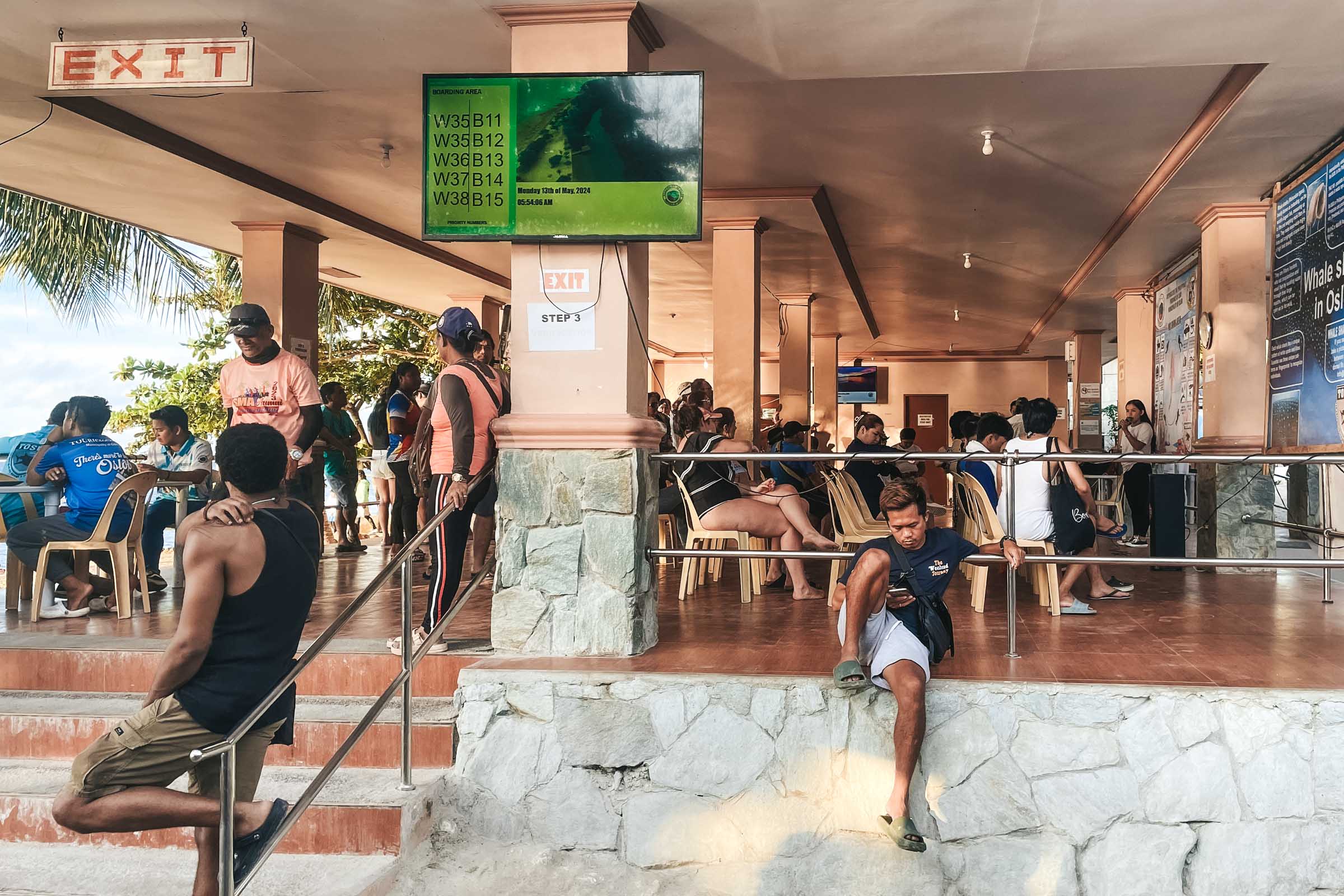

Boarding the Boat
When your number is finally called, it’s go time! You’ll be given a life jacket and a mask if needed, but no snorkel is provided. The rental gear isn’t the best quality, so I recommend bringing your own snorkel and mask if you have them.
A staff member will then assign you to a boat, and you’ll board a small paddle boat that takes you a couple hundred meters offshore to the designated whale shark watching area. The bottom of your boat will probably be full of water so don’t bring anything that you don’t want to get wet.

Swimming with the Oslob Whale Sharks
As you approach the whale shark watching area, look down into the water to see silhouettes of these massive creatures gliding beneath the surface. This is the moment you’ve been waiting for! Your captain will give you the go-ahead to jump in the ocean.
Before jumping in the water, you can choose to keep your life vest on or remove it. Either way, you won’t need to swim far. The whale sharks actively feed on the food dumped into the water. It’s sort of like a feeding frenzy.
The whale sharks aren’t afraid of people and will swim right up to you if you’re in their path, so keep your distance from them and stay clear.
You will have about 30 minutes in the water with the whale sharks, and in my opinion it’s plenty of time to take in the experience.
When your time is up, the boat captain will call everyone back onboard and paddle you back to shore.

Oslob Whale Shark Watching Price
As of March 21st 2025, the cost for whale shark watching in Oslob is:
- ₱1,000 per person for foreigners
- ₱500 per person for Filipinos
These prices only apply if you go directly to the Oslob Whale Shark Watching Center on your own, which is only feasible if you’re staying nearby in Oslob.
If you’re based in Cebu City, I recommend booking this Whale Shark Watching Experience that includes round-trip transportation from your hotel. This saves you the hassle of navigating public transport or arranging a private ride.
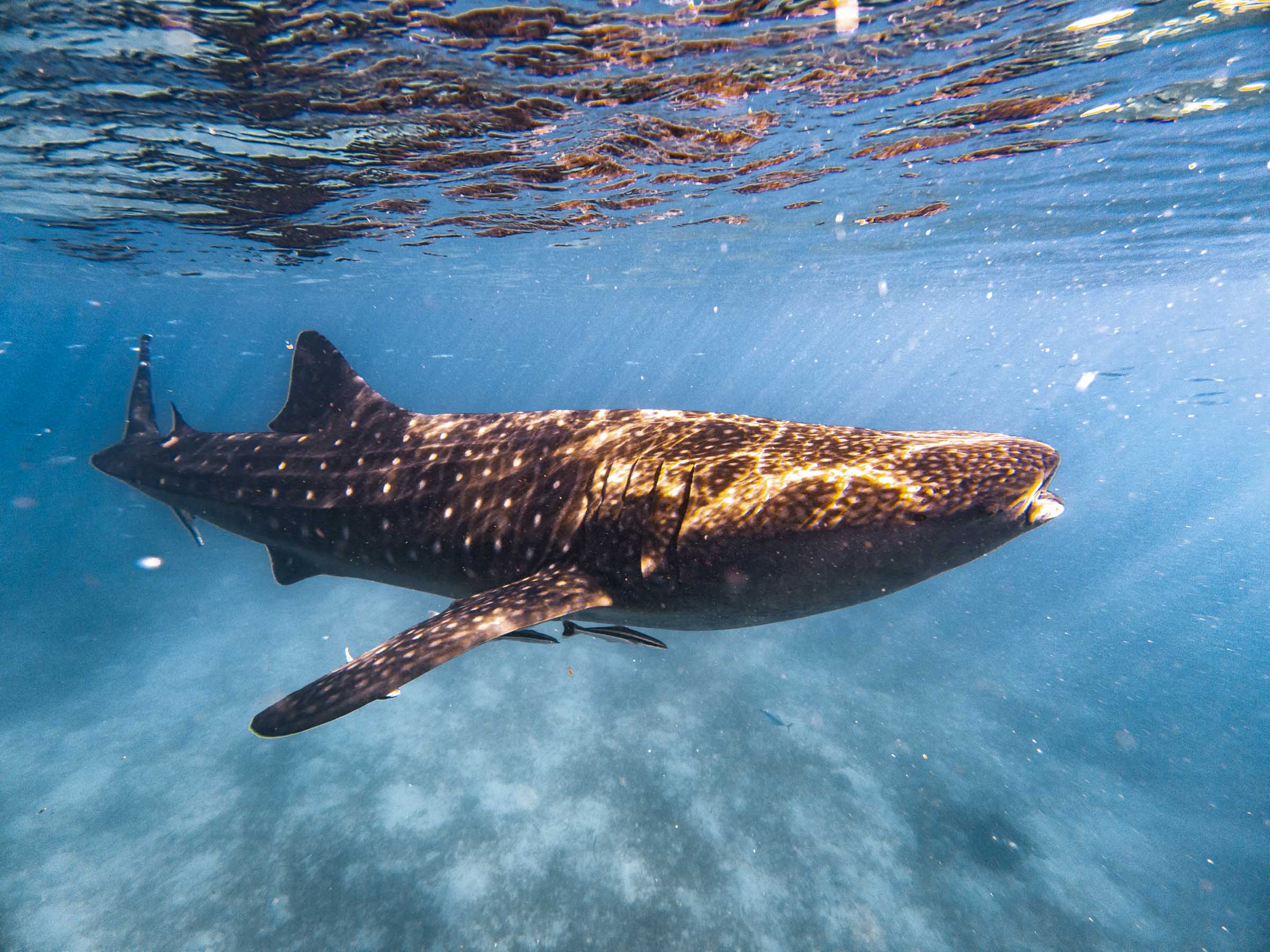
Oslob Whale Shark Watching Season
Whale shark watching in Oslob happens every single day of the year except Good Friday in April.
Unlike migratory whale sharks found in other parts of the world, Oslob’s whale sharks are a resident population, so you can swim with them no matter when you visit.
However, the best season to see the whale sharks in Oslob depends on the weather.
The dry season during December to June generally has good weather, while late March to May is the absolute best time to visit because this is when the ocean is at its calmest.
Oslob Whale Shark Watching Schedule
The Oslob Whale Shark Watching Center opens at 5 AM, when registration and ticket distribution begin. However, it’s common for people to start lining up as early as 3 AM to secure a good spot. The cutoff time for registration is 11 AM, but arriving later may mean longer wait times.

Timeline for Oslob Whale Shark Watching
To give you a realistic idea of how long the process takes, here’s a breakdown of the timeline of our Oslob Whale Shark Watching experience:
- 4:50 AM – We arrived and got in line. Fortunately, the line wasn’t too long since we visited in May, which is somewhat of a shoulder season.
- 5:00 AM – Ticket distribution began. We waited about 20 minutes to get our ticket.
- 5:20 AM – 6:20 AM – Waited for our ticket number to be called for payment. This took about an hour.
- 6:20 AM – Paid for our ticket, then went to the verification desk where they wrote our queue number on the receipt.
- 6:25 AM – Attended the mandatory safety briefing.
- 6:30 AM – 7:15 AM – Waited 30 minutes until our queue number was called. Then we put on our life vests and waited another 15 minutes before boarding the boat.
- 7:20 AM – Finally on the boat and paddled out to the whale shark area. The boat is wet, so bring a dry sack if you have things that need to stay dry.
- 7:25 AM – 7:55 AM – 30 minutes in the water with the whale sharks. We took off our life vests to free dive, which is allowed once you’re in the water.




Overall, I think we got lucky with the line. It didn’t seem like an overly busy day when we went Whale Shark Watching.
If you are visiting during a peak season (Chinese New Year, Holy Week, All Souls Day, All Saints Day, and Christmas through New Year), I recommend arriving earlier, around 4 AM.
Our Experience Whale Shark Watching in Oslob
As our boat approached the whale shark zone, I started seeing massive figures circling beneath the surface. It was the whale sharks! I was in disbelief that we were finally there.
Our captain stopped paddling and told us we could jump in whenever we were ready and take off our life jackets if we wanted to. Everyone hesitated for a moment, gazing at the water. I wasn’t about to wait so I jumped in first. Game on.
I won’t lie, those first few moments were intense. I’ve done plenty of snorkeling before, but I’ve always been the biggest creature in the water. Not this time. Not even close.
I took a moment to observe. The whale sharks were huge, their bodies covered in a pattern of white spots. They had the body of a whale but the fins of a shark. And yet, despite their size, they seemed completely unbothered by us. They weren’t afraid of humans, and they certainly weren’t paying us much attention.
As the whale sharks swam right by, mouths wide open, I spotted one of the boats that was feeding the sharks. It was a smaller single-outrigger canoe and the whale sharks followed its course, funneling in their meal.

Knowing where the food boat was meant I could predict the movement of the whale sharks.
It was time to dive down for a better look.
Underneath the surface, it was a completely different experience. The sharks moved fast. With three or four sharks swimming in the area at any given time, I kept checking over my shoulder to keep my distance.
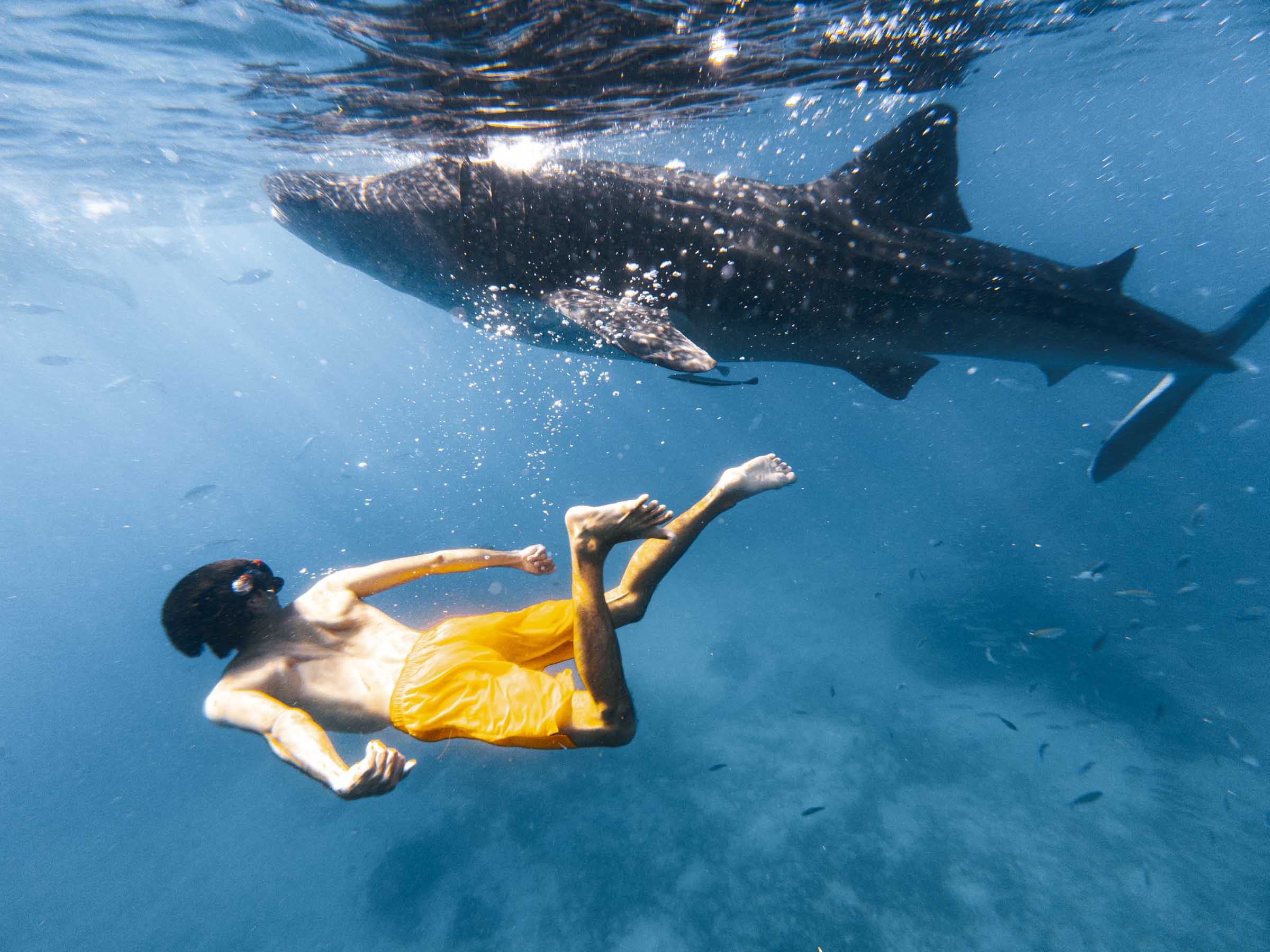
Before long, our boat captain called us back. I swam to the surface, took one last look at the giants gliding below, and climbed back onto the canoe.
As we paddled back to shore, I sat there, still processing what had just happened. I had just spent time in the water with one of the most incredible creatures on the planet.
Is Whale Shark Watching in Oslob Worth It?
It’s hard to talk about a trip to Cebu without the (in)famous Oslob Whale Shark Watching experience coming up. Some people love it, others criticize it—but in my opinion, it’s worth it, and I’d do it again.
Yes, the whale sharks are fed. Yes, it can get crowded. But compared to how things used to be, the experience has come a long way.
In the past, it was a bit of a wild-west situation, with little regulation. Now, the government has stepped in, enforcing rules and educating visitors to minimize harm to the whale sharks. While it’s not a perfect system, it’s significantly more structured and responsible than before.
At the end of the day, getting the chance to swim alongside these incredible creatures is an unforgettable experience—one that, if done respectfully, can be enjoyed while minimizing harm to the animals.
Oslob Whale Shark Watching Photos



Where to Stay in Oslob
If you’re going whale shark watching I recommend staying in Oslob for a few nights. The area has plenty to offer beyond the whale sharks, including Sumilon Island, Tumalog Falls, and even some of Cebu’s best waterfalls like Dao Falls and Inambakan Falls, which are just as accessible from Oslob as they are from Moalboal.
Here’s our recommendation on where to stay in Oslob. It’s a place called Melronz Inn. It’s situated a bit outside the town center, making it quieter and more relaxed. And the best part is that it’s located right on the water, with its own private ocean access.
We stayed at Melronz Inn, and it was by far the cleanest place we’ve stayed at in the Philippines. It’s a family-run inn, and the owners were incredibly welcoming, and always happy to offer local tips and recommendations to make our stay even better.
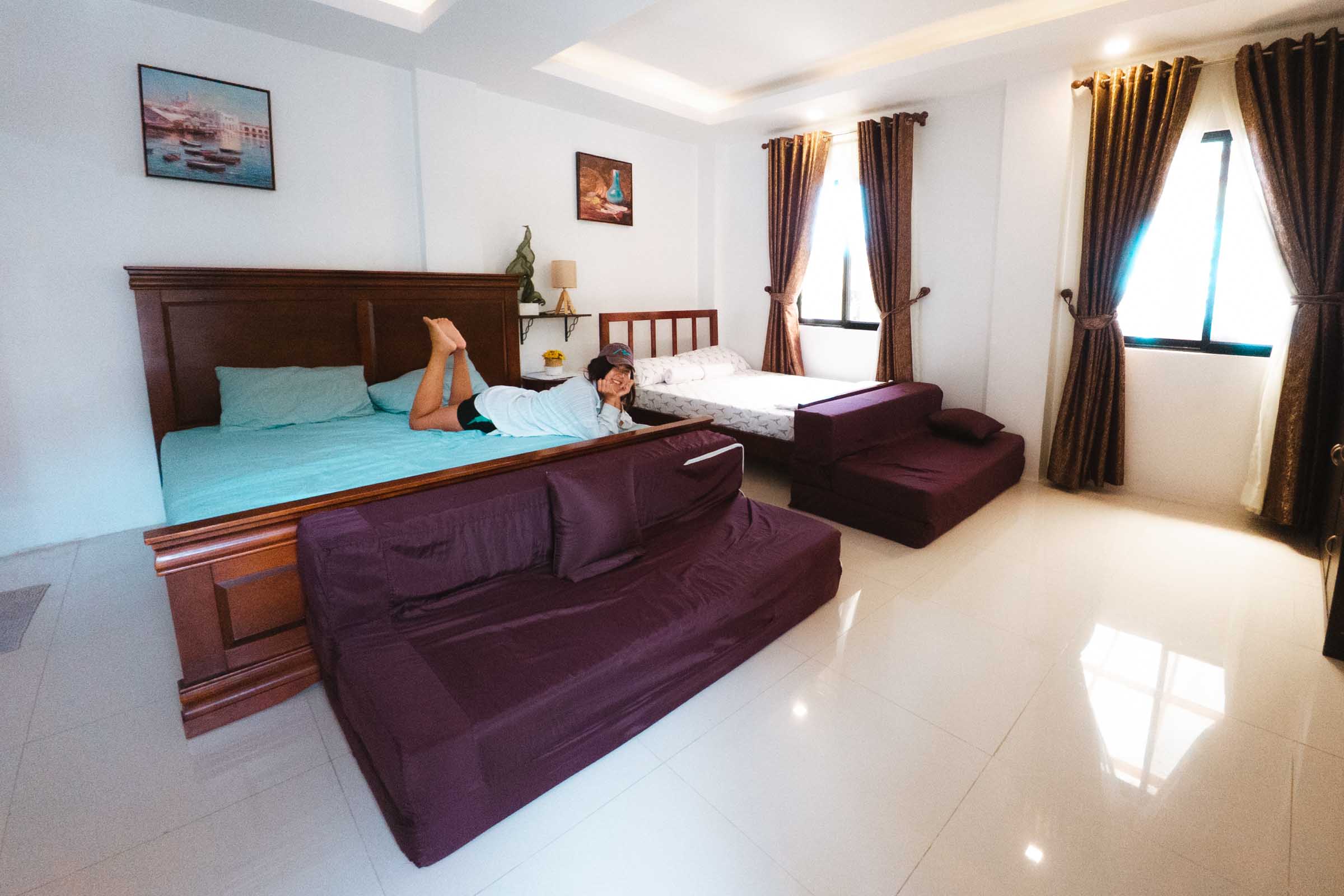
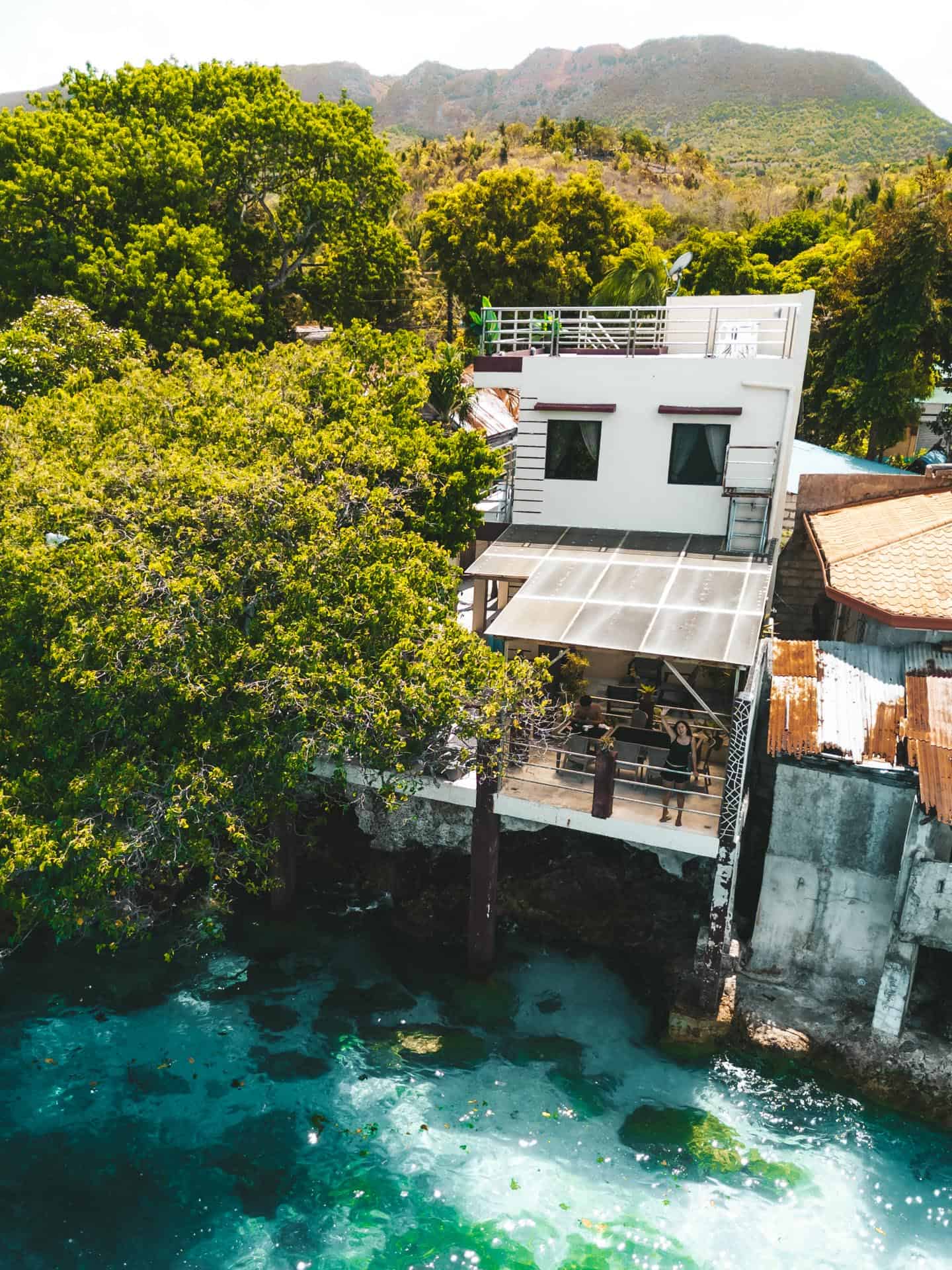
What to Pack for Cebu
- Water Shoes: If you plan to go canyoneering, a solid pair of water shoes like these are needed. If not, you can always wear crocs or even your sneakers if you don’t mind them getting wet!
- Snorkel: With sardine run in Moalboal and whale shark watching in Oslob, it helps to have your own snorkel set like this one for the best experience! Plus, you won’t need to worry about renting a snorkel, which may be of… questionable quality.
- Sunscreen: For some reason, sunscreen is expensive in the Philippines and I’ve even encountered places selling fake sunscreen that doesn’t work! So I recommend bringing your own sunscreen to Cebu.
- Dry Bag: With all the sand, salt, and water flying everywhere during our adventures, I was so glad to have a dry bag to keep all my things safe from the elements!
- Travel Towel: In my opinion, a travel towel like this one is super necessary for a trip to Cebu! It packs down nicely and was there for me anytime I went swimming, or just needed to brush sand or dirt off.
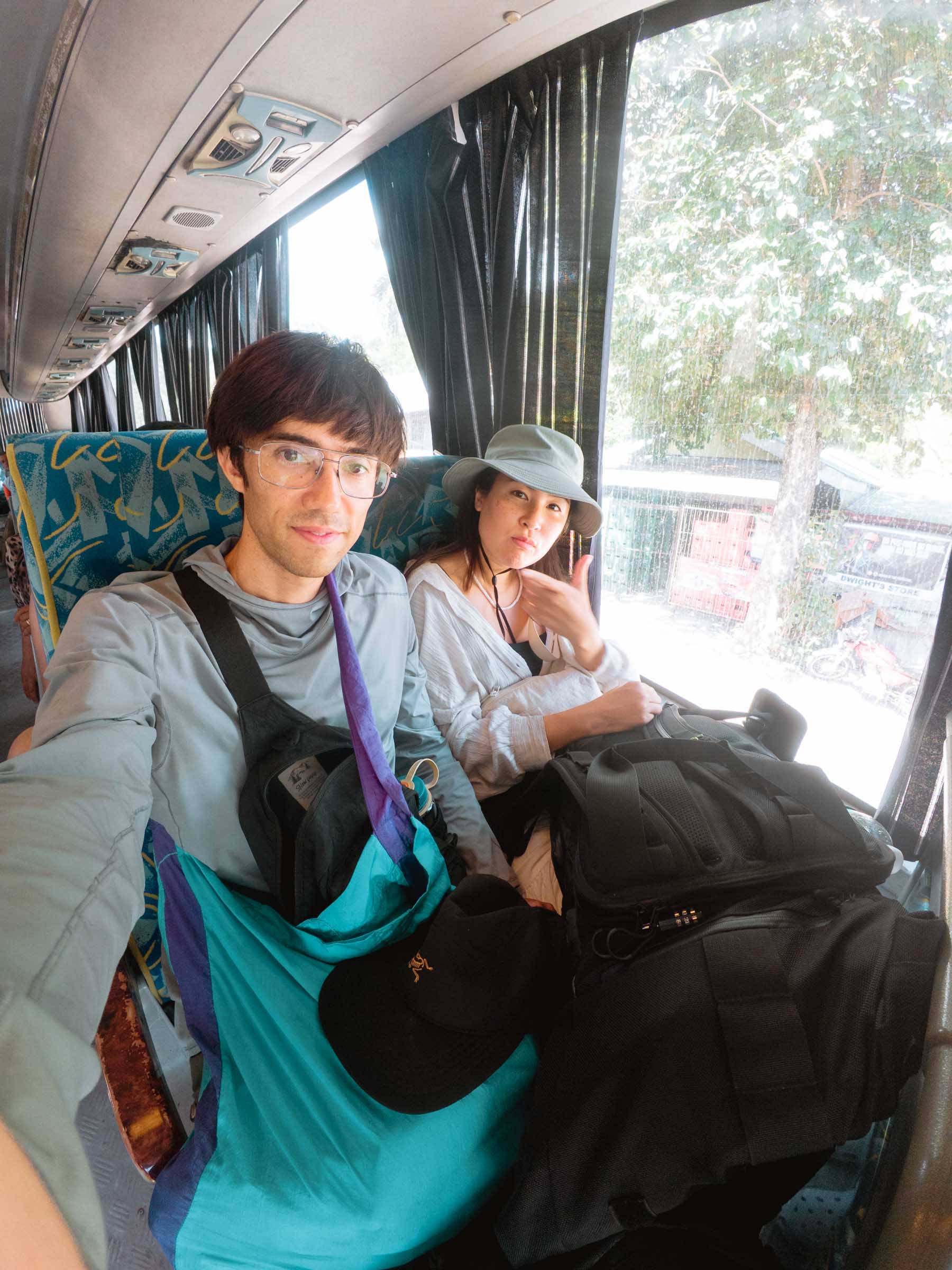
Our Free Cebu Google Maps Locations
Want a free map of all of the locations mentioned in this post? Sign up in the box below and we’ll deliver one right to your inbox, plus our top tips to help you plan your Cebu trip!
Need more Cebu travel ideas?
During our 7-day adventure in Cebu, we found some of the island’s most stunning natural wonders—milky blue waterfalls, limestone hikes, and incredible snorkeling spots. To help fellow adventurers, we’ve put together guides to the best places we found. You can check them out by clicking the links below.
- Start your planning here: Cebu Travel Guide
- Our Ultimate Guide to Cebu: 15 Incredible Things to Do in Cebu
- Our Moalboal accommodation guide: Where to Stay in Moalboal
- Our favorite waterfall (+ secret adventure) in Cebu: Inambakan Falls
- Hike to the highest point in Cebu: Osmeña Peak
- Our favorite hike in Cebu: Casino Peak
- Our favorite day tour in Cebu: Kawasan Falls Canyoneering
- The hottest hot spring we’ve ever visited: Mainit Hot Spring
- How to see the Moalboal Sardine Run without a tour
- Oslob Whale Shark Watching Complete Guide
- How to get from Cebu City to Moalboal
- How to get from Moalboal to Oslob
- How to rent a motorbike in the Philippines

I hope you enjoyed our guide to whale shark watching in Oslob, Cebu. Feel free to leave a comment below if you have any questions 🐸

